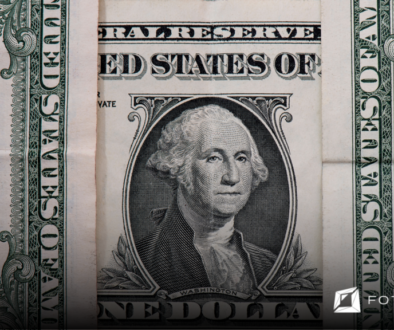How to Prepare Your Investment Portfolio for the Next Pandemic
On February 27th, 2020, the NASDAQ-100, the S&P 500 Index, and the Dow Jones Industrial Average posted their sharpest declines since the 2008 financial crisis as fears mounted over the rapidly-growing coronavirus outbreak. The Dow Jones alone fell more than 1,100 points and global stock markets quickly followed suit. By the end of the week, Wall Street indices were down at least 10%, and stock markets around the world plummeted from all-time highs into correction territory and bear market territory in the weeks that followed. Since then, global markets have recovered, but many investors lost a lot of money this year in the process. While you can never completely eliminate some of the inherent risks of investing, there are still some fundamental principles you can follow to prepare your investment portfolio for the next pandemic as well as any other future storm on the horizon.
Diversify your portfolio
You’ve surely heard before the saying “don’t put all your eggs in one basket”. If you drop the basket, you have a higher risk of all your eggs breaking as opposed to placing multiple eggs in multiple baskets to diversify away the risk of one basket falling and destroying all your eggs.
This concept translates very well to investing, but instead of eggs, you have money, and instead of baskets, you have investment vehicles such as stocks and bonds.
In essence, the primary goal of diversification is to minimize the risk in your investment portfolio and maximize your returns by investing in different financial instruments that would react differently to the same event (such as a stock market incline or decline). Some common examples of different types of portfolio diversification include:
Individual company diversification. With the current day proliferation of different index funds available to everyday investors, it’s easier now more than ever to diversify your investment portfolio across individual companies without needing to individually research and pick each one. Alternatively, the digital age has also made the research and selection of individual stocks much easier than before.
Asset class diversification. “Asset classes” pertain to the different types of ‘assets’ you can own in your investment portfolio, such as stocks, bonds, cash, real estate, and commodities. Each of these asset classes bow to different economic forces and will perform differently in various economic environments as a result.
Industry diversification. Individual companies operate within different industries or sectors which you can also add overarching exposure to in your investment portfolio. As with different companies and asset classes, industries are subject to various economic forces, so their performance will reflect which economic pressures at play.
For the next pandemic, having a well-diversified portfolio will be paramount to lessening the blow of any market corrections that might occur and keeping your portfolio intact through it all. However, there very well could be new investment opportunities created that you could allocate your investment portfolio too as well.
For example, this pandemic created new investment growth opportunities in sectors such as biotechnology (with vaccine research and development), healthcare equipment (with the manufacturing of ventilators and personal protective equipment), and in the technology space (with the world economy shifting online with cloud computing and eCommerce).
Need help diversifying your portfolio? Click the button below to schedule a one-on-one free consultation with one of our expert licensed investment advisers today.
Align your investment portfolio with your goals
Before you go investing in anything, it’s important to clearly spell out the reasons why you are investing. You likely have short-term (1-3 years), medium-term (4-6 years), and long-term (7+ years) goals, each with different funding requirements. For example, you might have a savings bucket for long-term growth, another for current wealth preservation, and another for current and future income creation.
Typically, the more time you have to invest, the more flexible you can be in taking more aggressive risks considering there is ample time to recoup losses in the event of adverse market moves. Conversely, the less time you have means the more conservative you may have to be with an emphasis more on wealth preservation than growth.
In general, the amount of risk you are willing to take will directly affect the reward you will receive. Bonds, for example, provide lower upside returns compared to riskier assets such as common stocks, but they also tend to move less on the downside. The opposite is true for common stocks, providing a lot more upside, but a lot more downside as well.
For the next pandemic, having your investment portfolio aligned with your goals will help you put any subsequent market volatility or downturns into the greater context of what you’re trying to achieve. Ideally, this will also allow you to react and make decisions in a calm, rational, and educated way.
What’s your Risk Number? Click the button below to find out.
Take advantage of the buying opportunities
As we saw this year, a pandemic – or any market downturn – can present a great opportunity to buy stocks at a discount. As Warren Buffett famously put it, “Be fearful when others are greedy, and greedy when others are fearful.” This expression encapsulates the old tried-and-true investment philosophy of “buy low, sell high,” and is exactly the type of opportunity a pandemic-induced market correction presents.
The proof is in the pudding because history has shown us that downturns are almost always temporary. In fact, the average duration of a bear market is less than one-fifth the duration of the average bull market, but the average decline for a bear market is only 28% while the average gain of a bull market is over 128%. In other words, every bear market in history has had it’s losses erased by the bull market that followed, and each bull market further extended the gains from the previous bull market as you can see in the graph below.
Source: Invesco.
While the past is not a predictor of the future, it does provide some assurance that what goes down does tend to go up eventually, so your best bet for the next pandemic is to stay invested and take advantage of the buying opportunities.
In general, it’s always a good idea to keep a cash cushion on the sidelines in your investment portfolio – no matter the market environment – for the sole purpose of being able to buy whenever opportunities arise.
The Bottom Line
There are many things you can do to prepare your investment portfolio for the next pandemic, whether it’s diversifying your portfolio or clearly defining your goals and aligning your investment portfolio to those goals.
Finding what works for you and what you can be comfortable with means taking a detailed look at your financial picture, understanding what risks you’re willing to take and not take, and translating that all into a comprehensive, well-informed strategy.
Since each person’s situation is unique, there’s no “one-size-fits-all” approach as far as preparing your investment portfolio for the next pandemic is concerned, so we recommend consulting a licensed investment adviser like ourselves to assist you.
Curious how we can help? Just click the button below to schedule a one-on-one FREE consultation with one of our expert advisers.
Securities and Advisory Services offered through Calton & Associates, Inc., Member FINRA/SIPC. OSJ: 2701 N. Rocky Point Drive, Suite 1000, Tampa, FL 33607 (813) 264-0440. Forefront Wealth Partners and Calton & Associates, Inc. are separate entities.
Calton & Associates, Inc. does not provide legal or tax advice.





